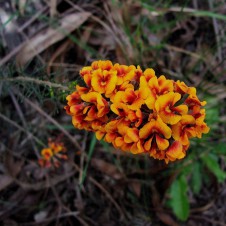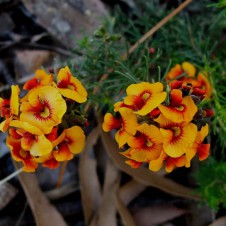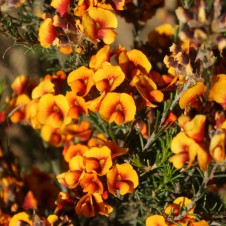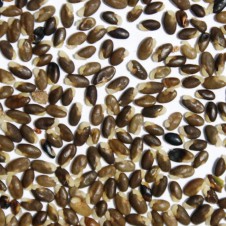General Description: A compact, sometimes spreading shrub to 1 m tall with clusters, of small, thin, grey-green leaves that are not prickly. Inflorescence a crowded head of bright, orange and red pea flowers at the ends of the branches.
Flowers and Fruit: Crowded into heads on branch tips. Sepals fused to from a 5-lobed tube. Flowers from September to November. Fruit is in oval shaped pods 5-7 mm long containing 1 (rarely 2) kidney-shaped seeds, to 3 mm long.
Site Preference and Tolerances: Common on lower slopes. Found in dryer well drained soils of forests and woodlands. Frost tolerant, grows in dappled to semi shade.
Life Span: Appears to have a medium life span, perhaps up to around 20 years.
Wildlife Value: Butterfly attracting and provides seed for ants and seed eating fauna, food source for birds and caterpillars.
Other Values and Uses: Prune after flowering for bushy growth. Can be used for under-planting in shady situations under established trees.
Other Scientific Names: Dillwynia cinerascens s.l.
Germination Information: Need to break seed dormancy and heat treatment using just boiled water is usually used. I prefer to pour just boiled water over the seed and leave it for at least half an hour to ensure the seedcoat is cracked and the seed has taken in some water.




